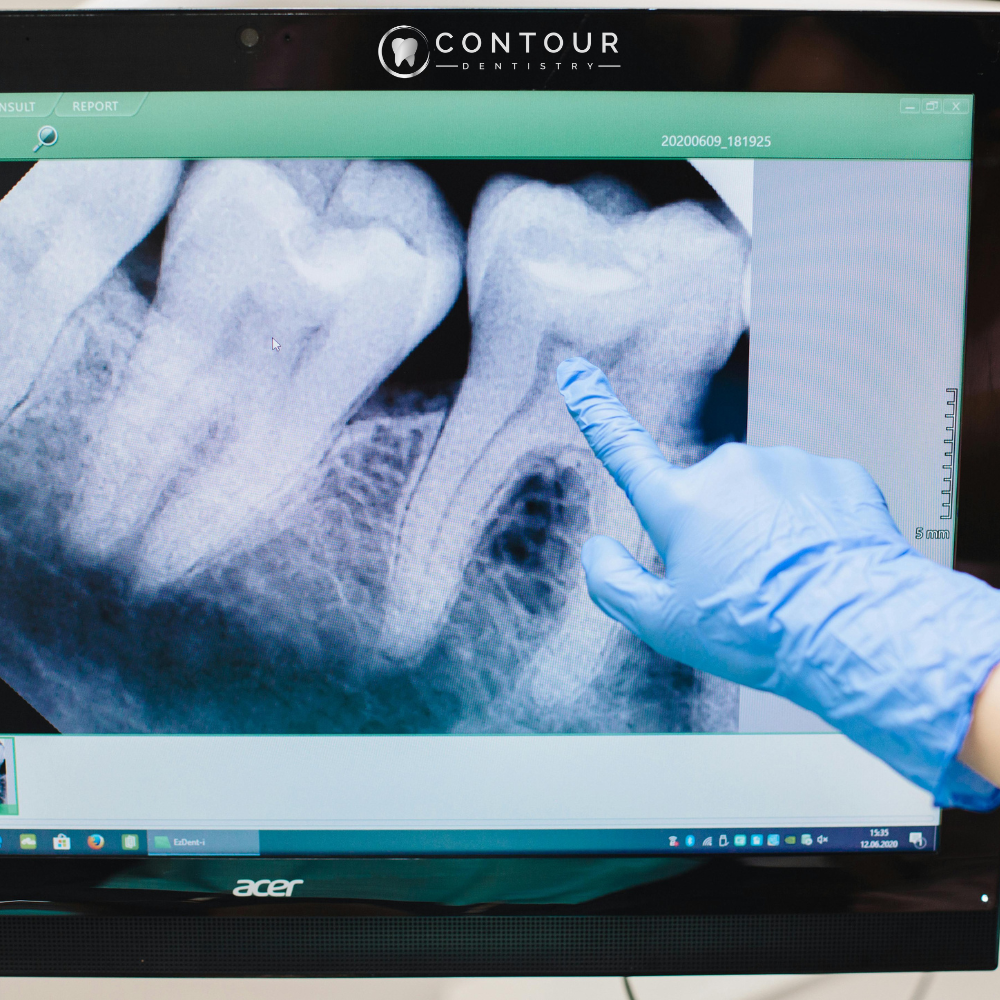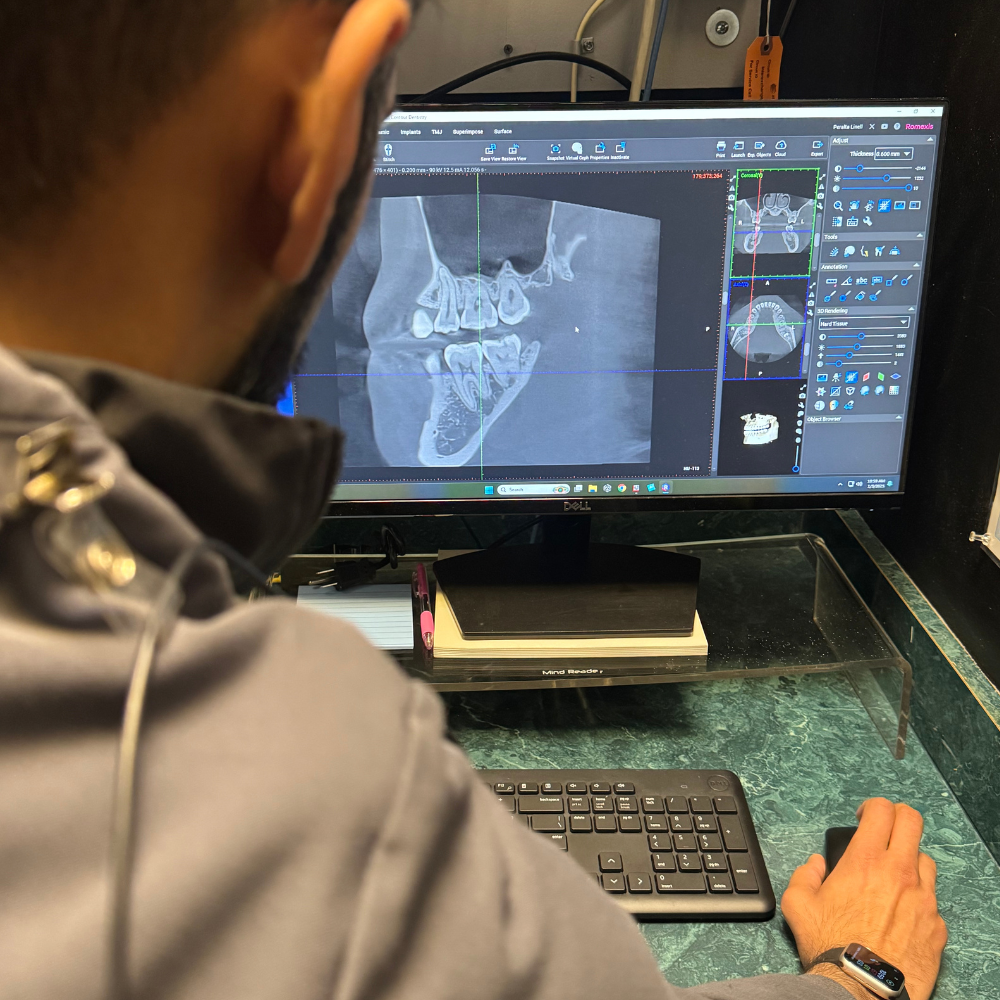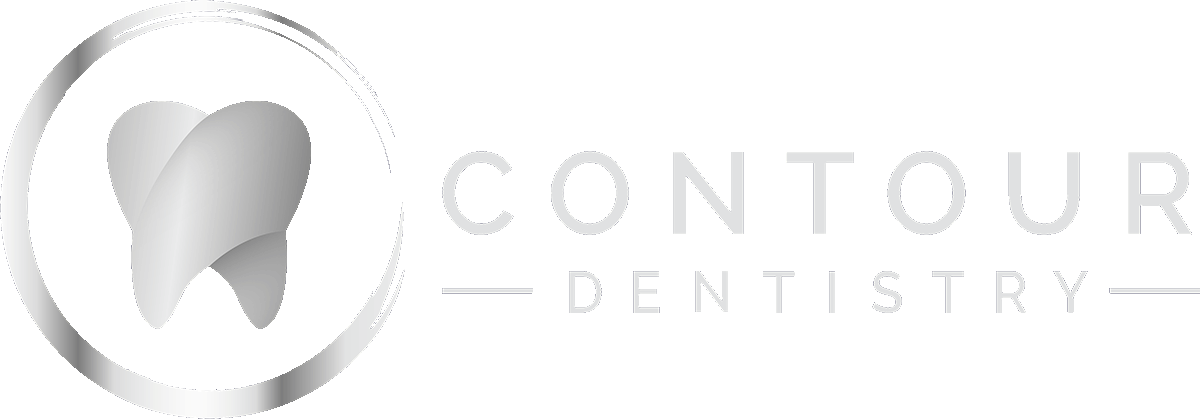When you visit the dentist for a routine check-up, one of the most common parts of the visit is getting dental X-rays. While they might seem like just another step in the process, dental X-rays are a powerful tool that helps dentists see beyond what the naked eye can. At Contour Dentistry, we use digital X-ray technology to keep your smile healthy and catch problems early —before they become bigger issues. So, what exactly are dental X-rays, why do you need them, and what can they tell us about your oral health? Let’s dive in.
What Are Dental X-rays?

Dental X-rays (also known as radiographs) are images of your teeth, bones, and surrounding soft tissues. These images allow Dr. Patel and our team to detect issues that can’t always be seen during a visual exam, such as cavities between teeth, infections, bone loss, or impacted teeth.
At Contour Dentistry, we use low-radiation digital X-rays that provide high-quality images with minimal exposure, making them safe for patients of all ages.
Why Are Dental X-Rays Important?
Even with the most thorough oral exam, there are areas of your mouth that simply can’t be seen without the help of X-rays. Here’s why they’re such an important part of your care:
1. Early Detection of Cavities
Tooth decay often starts between the teeth or beneath the surface. X-rays can reveal these hidden cavities before they become painful or require more invasive treatment like a root canal or crown.
2. Monitoring Bone Health
Bone loss can occur due to gum disease or other oral health conditions. X-rays help us monitor the bones around your teeth and detect any deterioration early on.
3. Checking Tooth Development
For younger patients, X-rays are useful in monitoring the development of adult teeth. They help us identify issues like delayed eruption, missing teeth, or extra teeth.
4. Identifying Infections or Abscesses
Sometimes an infected tooth might not cause pain right away. X-rays allow us to spot infections in the roots or jawbone so we can treat them before they worsen.
5. Planning for Dental Treatments
X-rays are also used to plan treatments like dental implants, orthodontics, or tooth extractions. They give Dr. Patel a clear picture of your oral structure, which helps create accurate and safe treatment plans. Dr. Patel also uses 3D-imaging to create a precise and accurate plan for procedures that perfect your smile.
Types of Dental X-rays
There are several types of dental X-rays, each with a specific purpose. Depending on your needs, Dr. Patel will recommend the most appropriate type for you.
Bitewing X-rays
These are the most common and show the upper and lower back teeth in a single view. They help detect decay between teeth and check bone levels.
Periapical X-rays
These show the entire tooth — from crown to root. They are helpful for diagnosing abscesses, bone loss, or issues with the root of the tooth.
Panoramic X-rays
This type provides a broad view of the entire mouth, including the jawbones, sinuses, and all teeth. It’s often used to check for impacted wisdom teeth, jaw problems, or when planning orthodontic treatments.
Occlusal X-rays
These capture images of the roof or floor of the mouth and are often used to track the development of children’s teeth.
Are Dental X-rays Safe?
Yes! Dental X-rays are very safe, especially with today’s digital technology. At Contour Dentistry, we prioritize your safety by using low-dose digital X-rays that reduce radiation exposure by up to 90% compared to traditional film X-rays.
For extra protection, we also use lead aprons and thyroid collars during the process. If you’re pregnant or have any concerns, let our team know — we’re always happy to adjust care to meet your needs and comfort level.
How Often Should You Get Dental X-rays?
The frequency of dental X-rays depends on your oral health history, age, risk of disease, and whether you’re experiencing any symptoms.
- New Patients: Often need a full set of X-rays for a baseline
- Routine Checkups: Usually include bitewings once a year
- High-Risk Patients: May need X-rays more frequently
- Children and Teens: Might need X-rays more often due to changing teeth
Dr. Patel will evaluate your individual needs and recommend an X-ray schedule that’s right for you.
What Happens During a Dental X-ray?
Getting a dental X-ray is a quick and painless process. Here’s what you can expect:
- You’ll be asked to wear a lead apron for protection.
- A small sensor or film will be placed in your mouth.
- The technician will position the X-ray machine and take the image.
- Digital images appear instantly on a screen for Dr. Patel to review with you.
The entire process takes just a few minutes!
What Can Dental X-rays Reveal?

You’d be surprised how much information a simple X-ray can provide. Here’s a closer look at what we might spot:
- Tiny cavities before they grow
- Infections in roots or bone
- Gum disease
- Bone loss
- Cysts or tumors
- Impacted teeth or wisdom teeth
- Cracks or fractures in teeth
- Tooth alignment issues or jaw problems
Catching these issues early means simpler, less costly treatments and a healthier smile in the long run.
Let’s Take a Closer Look at Your Smile! Schedule Your Appointment Today.
Your smile deserves the best care. Schedule an appointment with Dr. Patel and the friendly team at Contour Dentistry today! Call us at (704) 702-6428 or book online to get started—we can’t wait to see you.
